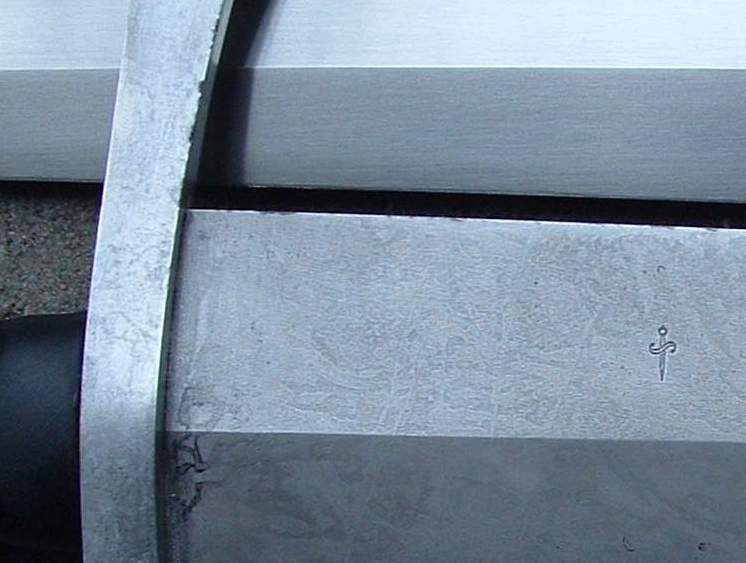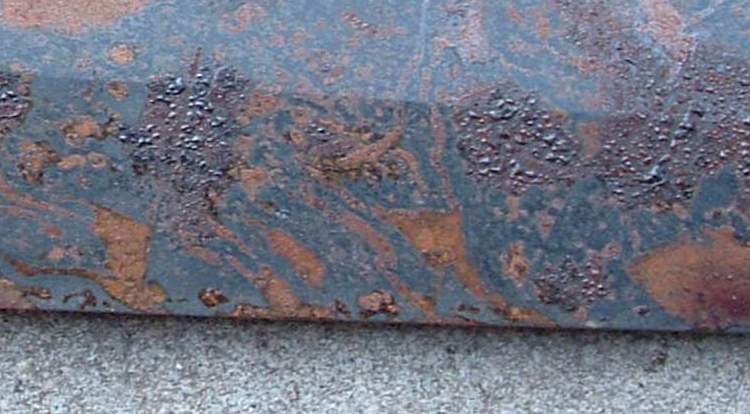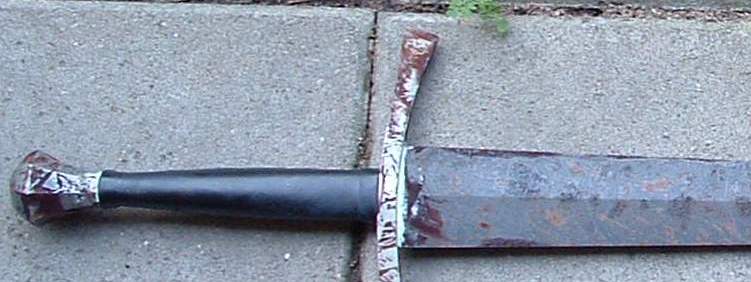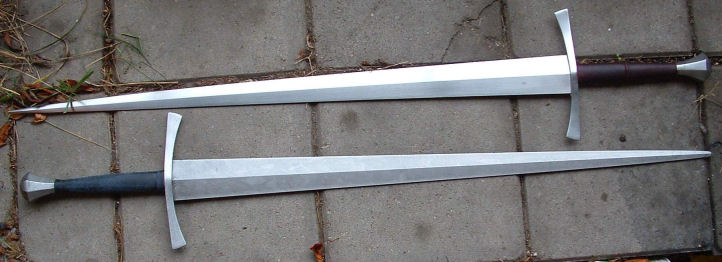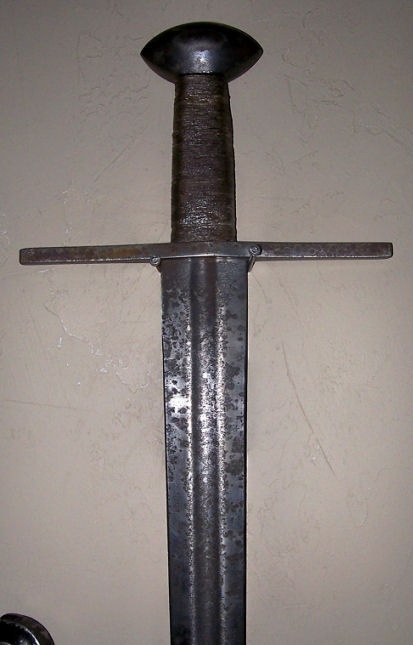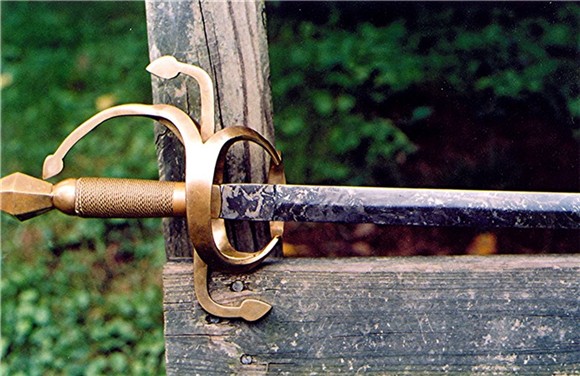A trace element seems to be the culprit, probably sulphur or manganese.
Anyway for those interested in the effects of vinegar and salt on an Albion blade, here's a closeup of the final result. (Next to an untreated NG blade)
Wrapped it in toilet paper, then soaked it in vinegar&salt and let it sit overnight. Cleaned it with very fine steel wool and repeated the process.
There's no pitting visible with the naked eye.
The blade had hundreds of scratches before the treatment. Most of those are gone or invisible now.
I like the (easily reversible btw) result. The sword looks old now, without losing functionality/integrity.
I may do another experiment in the future but for now it's okay.
 Attachment: 44.32 KB
Attachment: 44.32 KB
